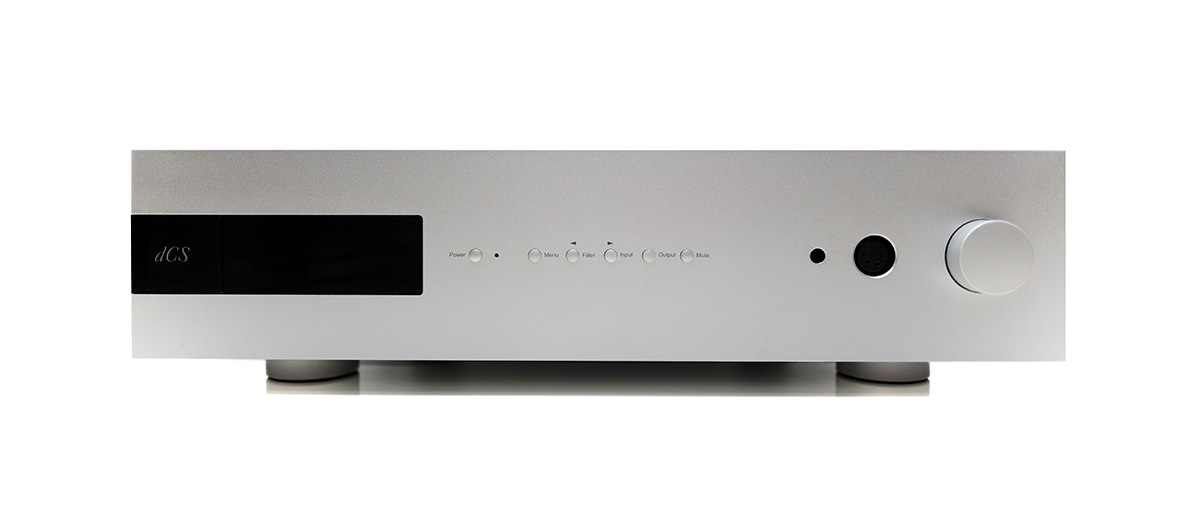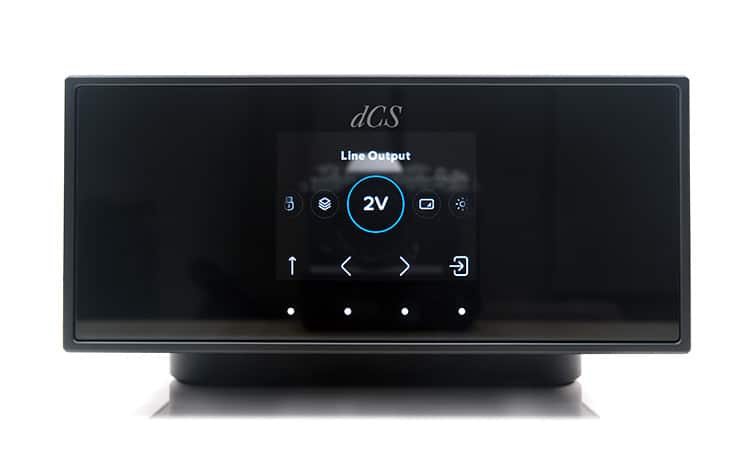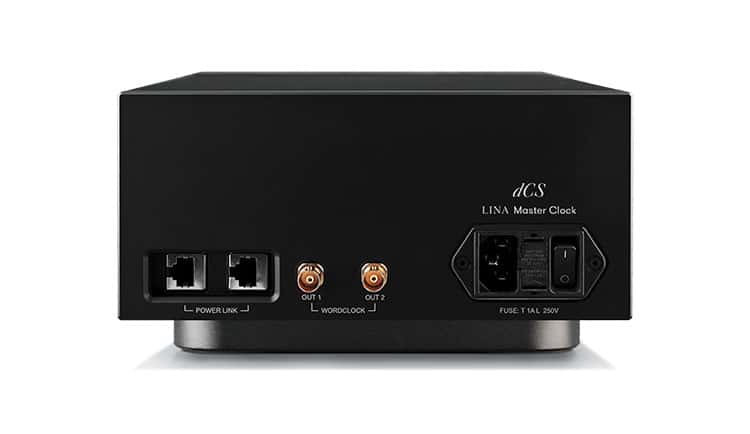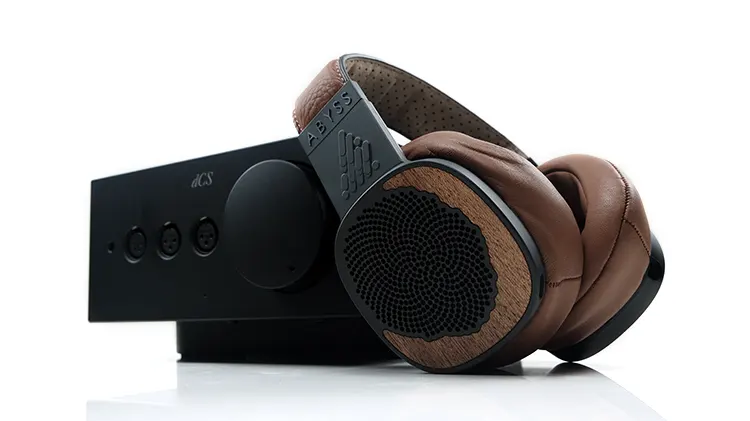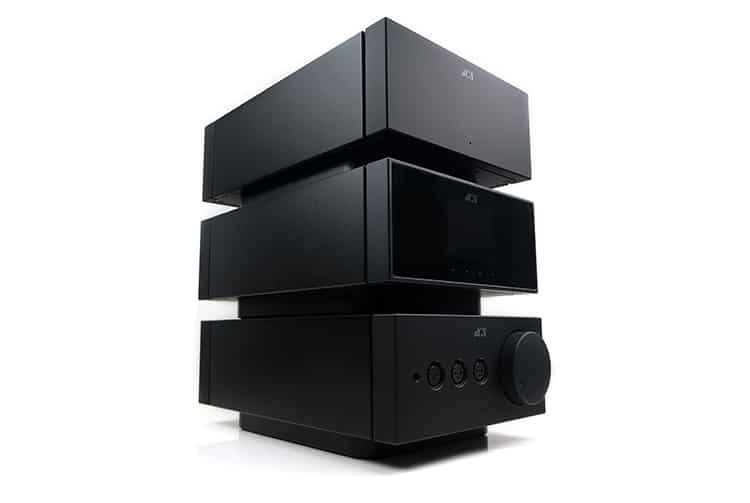How Does It Compare To The dCS Lina System?
The dCS Lina System is comprised of three components that whilst pitched as a complete system can also be purchased separately depending on your specific needs.
This includes a Network DAC, a headphone amplifier, and the final component, which is referenced in more detail in our sound impressions, a standalone Master Clock. I reviewed all three individually in 2022 and are still here in our office for listening and referencing purposes.
Setup
For this comparison, both units were set to Map 1 and received a USB signal from a PC/Roon transport. The headphones used were the ABYSS DIANA MR (Leather pads), and the Focal Utopia 2022 in a balanced output configuration.
Decoding
Both the Lina Network DAC 2.0 and Bartok APEX use a Ring DAC core. However, they are not exact duplicates.
Lina and APEX were parallel development projects so there was some influence on the Lina Network DAC development. However, whilst being a step forward on the original Bartók DAC it is different in architecture to the APEX version.
The Lina Network DAC housing is far narrower than the Bartok APEX yet it must accommodate the same board size. dCS essentially folded the board with key components on the sides of the housing with a flex-rigid PCB to fit rather than a more spatially demanding flat design.
Both versions do contain similar 2.0 features, however. That means both will receive data for conversion at 5.644 or 6.14MHz as opposed to just the lower 2.822 or 3.07MHz from the original.
You have similar mapping layouts in Mosaic. The default is Map 1, (either 5.644 or 6.14MHz), Map 2 is drawn from the original Ring DAC, (either 2.822 or 3.07MHz), and the third is an alternative design from DCS for running the Ring DAC core at 5.644 or 6.14MHz.
Decoding levels are matching on both at 24BIT/384kHz PCM with a maximum of DSD128 including DSDX2 upsampling and the latest DSD128 upsampling from the 2.0 firmware update.
Like the Bartok APEX, the Lina Network DAC will also accept digital signals via AES at up to 24BIT/384kHz, coaxial to 192k, and optical to its maximum 96k rate. Analog output is a user-selectable variable line-out on both at 0.2V, 0.6V, and 2V or a very high-energy 6V depending on your preferences.
Streaming is set in the same manner on both units with a RJ45 socket for ethernet connectivity. Both units are Roon Ready with Deezer, Qobuz, TIDAL, and Spotify available as well as UPnP.
Clocking
The Lina Master Clock is not exclusive to the Lina system. You can buy and connect it also to the Bartok APEX and get similar benefits as you would with the Lina Network DAC attached.
The Master Clock will deliver a fixed reference frequency that slave clocks or DACs such as the Bartok APEX and the Lina Network DAC’s internal clock system can lock onto consistently.
In this case, it is 44.1k and 48k signals for both via the Master Clock’s two quartz crystal oscillators, one of which is oven-controlled and the second one is voltage-controlled and slaved to the oven-controlled version running at run at 22.5792MHz and 24.576MHz respectively and are direct multiples of 44.1k and 48k.
The beauty of this pairing is that since the menu already accommodates a Master Clock function the Bartok APEX will be immediately compatible with the Clock and, with the same menu-based user options of either Auto, W1, or W2.
The question of whether you get one or not for the Bartok APEX will come from budget and personal preference for how it affects the sound quality compared to not having one, (see my previous Master Clock pairing impressions above).
Amplification
The biggest single difference between both amplifiers is the Class topology with the Bartok APEX using a Class A design and the Lina amp using a Class AB.
There will be purists who will remain in the Class A camp but the reality is that the Bartok APEX is ‘an all-in-one’ whereas the Lina Headphone Amplifier needs the dexterity and efficiency to cover all the headphone bases as it is purely a headphone amplifier.
dCS has upped the current limits as well as improved the voltage rails on the Lina over the Bartok APEX to give it more headroom for trickier loads and esoteric systems such as planar which require both high current and high voltage levels.
To that end, the Lina amplifier is more powerful on paper at 2W into 30Ω compared to 1.4W (33Ω) from the Bartok APEX when going balanced. Even on much higher loads up to 300Ω, there is still more juice on tap from the Lina at 0.48W compared to 0.15W.
Optimal output levels are also much higher on the Lina amp, (4.5W), compared to the Bartok APEX, (2.7W), at around 60Ω which will offer more headroom to less efficient planar headphones.
I am presuming both mW measurements are A-weighted at 1kHz and we know both have sub-1Ω PO output impedance which is ideal for efficient headgear including IEMs.
One other significant technical difference in their amplification is the ability to accept 3rd party analog inputs. The Bartok APEX is enclosed so it can pre-amp out to any amplifier but it cannot accept an analog input from another DAC.
The Lina can not only accept a buffered input from the modular DAC equivalent but also an unbuffered higher impedance input from just about any 3rd party DAC SE or balanced.
Performance
With the Bartok APEX upgrade, I think the contrast between these two in terms of identity and coloration is now more clearly defined.
The Bartok APEX is the fuller, warmer, and smoother source and amplifier. Whereas the Lina now sounds even more neutral and cleaner in its delivery than when I last compared them before the APEX upgrade.
It’s the enhanced body and the shift towards an even-harmonic bias in the instrumental timbre from the Bartok APEX performance that you will pick up on first, both in the lower register and midrange instrumentation and vocals.
Not that the original Bartok has a substantially different tuning but it now seems more refined, more detailed, and with less perceived digital contrast in the upper mids and lower treble of our tested headphones.
One big advantage of the Lina system over the older Bartok was the tonal consistency throughout. If anything, the Bartok APEX now matches that consistency but with its own fulsome and smoother tonal identity.
As such, Lina is a little leaner in note weight with less bass bloom. You will also likely perceive it as more agile and articulate in the highs with a shorter decay given it has a more forward treble presence.
Since its inception, the Bartok has always been the more laid back of the two, but perhaps as a consequence of flattening the 3rd order on the Bartok APEX model, the treble now seems more coherent. So, for some, this will be the easier-on-the-ear offering for the mids and highs.
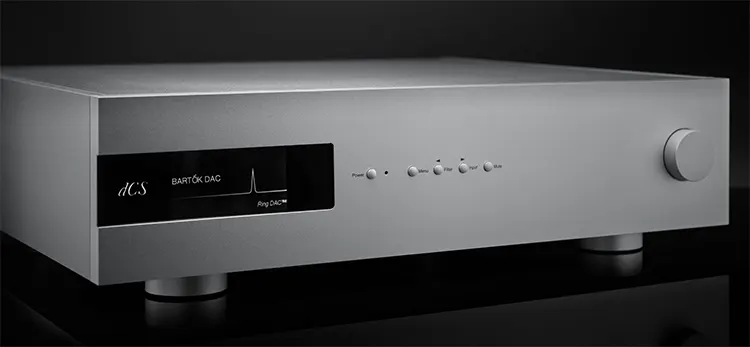
Our Verdict
The dCS Bartok APEX is a significant upgrade on the original and the 2.0 versions of this world-class all-in-one integrated DAC, pre-amp, and headphone amplifier. It is audibly more refined and coherent sounding than what has come before.
Granted, I only touched on some of the key components and focused on the upgrade itself in this review. There is a lot more inside the Bartok APEX that adds significant value.
Aspects such as the streaming app and the excellent dCS Mosaic integration that we went into detail in our original review including the outer appearance and connectivity, remain assuredly familiar.
Importantly, there is now a clearer distinction between this tuning and the Lina System’s more neutral presentation. If you are demoing them it should be clear to your ear which one you prefer.
I will say if you can afford to get the standalone Lina Master Clock for the Bartok APEX system then go for it. The enhanced performance is the icing on the cake for me.
One of the best ‘money-is-no-object’ headphone systems out there for the last few years just got significantly better in 2024.
dCS Bartok APEX Technical Specifications
- Type: Upsampling Network DAC with Headphone Amplifier
- Color: Silver or Black
- Dimensions: 444mm / 17.5” x 430mm / 17.0” x 115mm / 4.6“. Allow extra depth for cable connectors.
- Weight: 16.7kg / 36.8lbs
- DAC: dCS proprietary Ring DAC™ APEX topology
- Power Supply: Factory set to either 100, 115/120, 220 or 230/240V AC 50/60Hz
- Power Consumption: 30 Watts typical / 50 Watts maximum
- Software Updates: Download and update functionality available via Bartók App
- Local Control: dCS Mosaic Control app for unit configuration and playback. RS232 interface (controlled by a 3rd party automation system). dCS Universal IR remote control is available as an optional extra.
Analog Inputs
- Output levels: 0.2, 0.6, 2, or 6 Vrms for full-scale input, set in the menu.
- Balanced outputs: 1 stereo pair on 2x 3-pin XLR male connectors.
- Output impedance is 3Ω, the maximum load is 600Ω (10k-100kΩ is recommended).
- Unbalanced outputs: 1 stereo pair on 2x RCA phono connectors. Output impedance is 52Ω, the maximum load is 600Ω (10k-100kΩ is recommended).
- Headphone Outputs
- 1 x 4-way male XLR connector, 1 unbalanced pair on 1 x 6.35mm (1/4”) 3-pole jack.
- 1.4W rms into 33Ω per channel
- 0.15W rms into 300Ω per channel
- Output gain levels: 0, -10, -20, -30dB, set in the menu.
Digital Inputs
- 2x AES/EBU on 3-pin female XLR connectors accepting PCM at up to 24-bit 192kS/s or DSD/128 in DoP format individually and PCM at up to 384kS/s, DSD/64 & DSD/128 in DoP format or dCS-encrypted DSD combined.
- 2x SPDIF, PCM at up to 24-bit 192kS/s or DSD/64 in DoP format.
- SPDIF optical on a Toslink connector will accept PCM at up to 24-bit 96kS/s
- BNC connectors PCM at up to 24-bit 192kS/s or DSD/64 in DoP format.
- Dual-RCA unbalanced output
- Supports Apple AirPlay at 44.1 or 48kS/s
- Network Loop Out connector on a second RJ45 connector
- USB 2.0 interface on a B-type connector operating in Asynchronous mode, will accept up to 24-bit PCM at up to 384kS/s plus DSD/64 & DSD/128 in DoP format.
- USB- OTG capable of up to 24-bit 384kS/s plus DSD/64
Codec Formats
- FLAC, WAV & AIFF at up to 24-bit 384kS/s native sample rate
- DSD/64 & DSD/128 in DFF/DSF format
- WMA, ALAC, MP3, AAC & OGG

